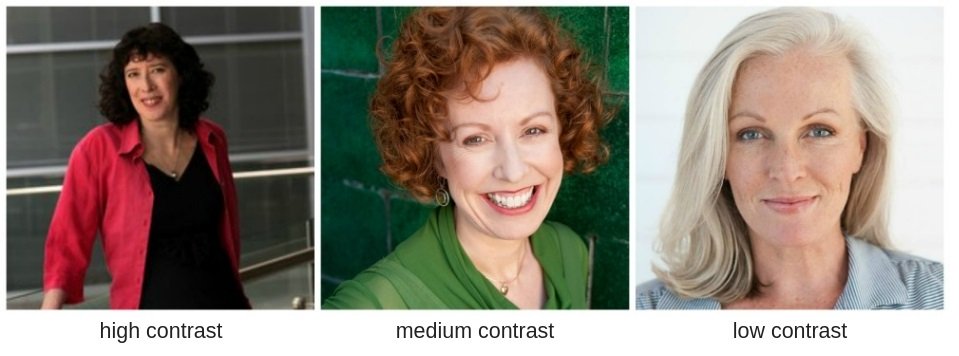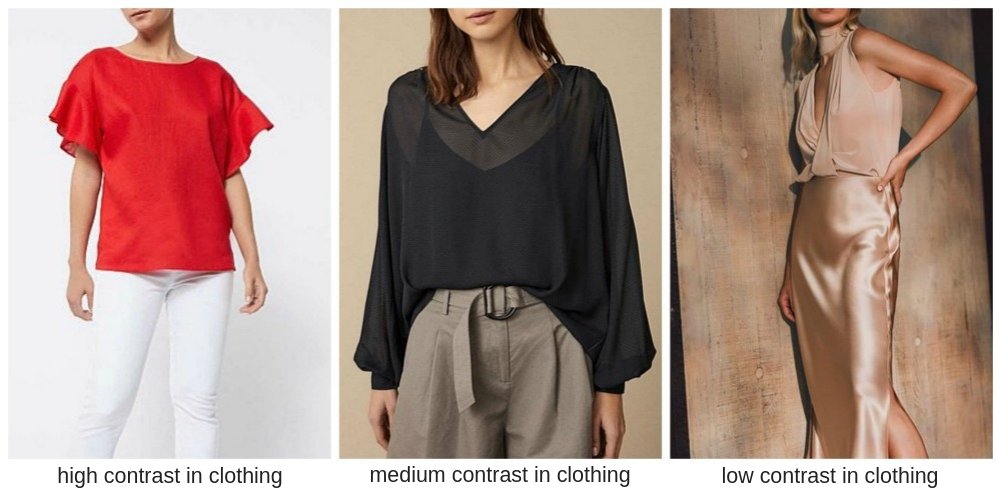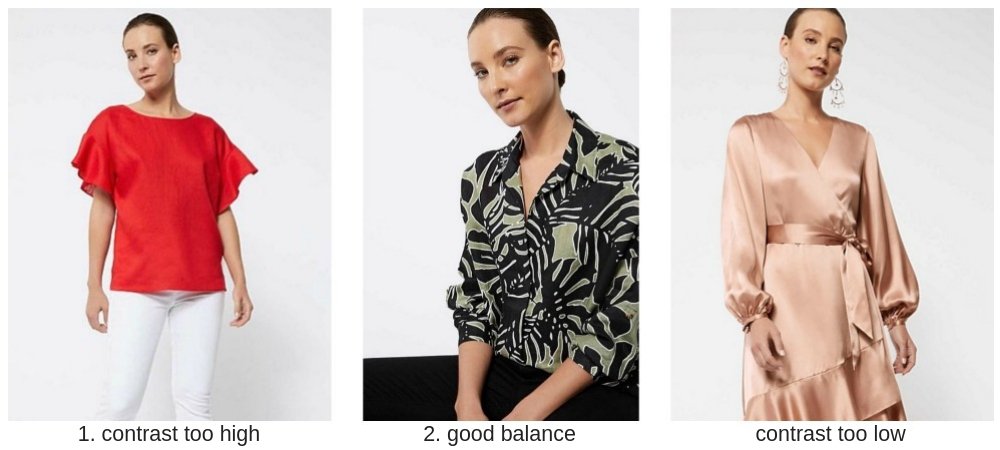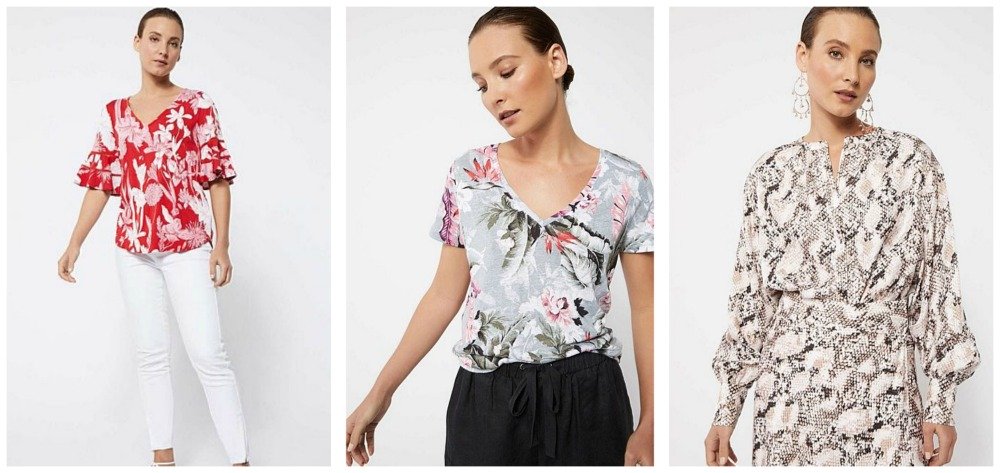Your Personal Colors and Contrast
A key element of creating flattering looks, related to color, is contrast. When we wear colors that reflect both our personal coloring and our contrast level we create a pleasing harmony between ourself and our clothes.
What is contrast?
First it helps to understand more about color value, one of the attributes of color (identified by Albert Munsell). The value of a color is how light or dark the color is (see the color value scale below).

Color Values -- how dark or light a color is
Contrast is the difference between 2 colors, on a sliding scale from high, to low.

Examples of Contrast Levels
A high contrast is when there's a big difference between 2 colors. For example, a dark and a light color create a high contrast. It creates a dramatic effect. It can be seen as intimidating, because it looks strong.
A medium contrast is when there is an obvious difference between 2 colors, but the effect is calmer to look at than a high contrast. For example, a dark color and a medium color; or a medium color and a light color; or a medium-dark color and a medium-light color. A medium contrast level is seen as most appropriate for work and business occasions.
A low contrast is when it's difficult to make out the difference between 2 colors (as in the example in the picture above, on the right). For example, 2 dark colors; or 2 medium colors or 2 light colors. It can create a refined, elegant look. However, it can also may a person feel, and look, less visible.
How to use contrast
There are 2 aspects of contrast to consider:
- Your personal contrast level -- this is the biggest contrast between your hair, skin and eyes (and perhaps your eyebrows if they are a different color value to your hair, skin, or eyes). For example: if you have light skin and dark hair your contrast is high; if you have medium value hair and light skin your contrast level is medium; if you have light hair and light skin your contrast level is low.
- The contrast level, or levels, within your outfits -- for example: the contrast between your top and your skirt or pants; or the contrast level(s) within a pattern

Examples of Personal Contrast Levels

Examples of Contrast Levels in Clothing

Examples of Contrast Levels in Clothing Patterns

Examples of Contrast Levels Between a Medium Contrast Level Woman & Various Contrast Levels
- The top forms a high contrast between the woman and her light skin. In addition the outfit has a high contrast level. The result is we see the top and then the outfit and before the woman
- Here the top forms a medium contrast with the woman. And the outfit is also a medium contrast. There is a good balance between the woman and the outfit, the look is harmonious
- The dress forms a low contrast with the woman's skin. Overall she has less visual substance than in either of the other photos. It's harder to see her
Your most flattering outfits will be those that echo your own personal contrast level.
In particular create your contrast level between your skin and what you're wearing near your face.
However, if your own contrast is low, to increase your visibility, especially in a work situation, you may need to create a medium-low contrast level.
How to wear a contrast level that isn't your best

Examples of Wearing Patterns With Mixed Contrast Levels
Patterns -- if a pattern contains 3 or more color values that create a mix of contrast levels, not just high and low, it can be easier for people with low or medium contrasts to successfully wear.
Do you see how in the examples above all of these outfits with patterns work better than the high or low contrast outfits in other examples above?
Create a contrast or add texture in your portrait area -- this is another way to correct a contrast level that's too high or too low. A lipstick in one of your best brighter shades may be enough to correct the balance. Or try a necklace near your neckline that creates a different contrast, or adds texture to soften a high contrast, or create interest for a low contrast.
Finding your personal contrast level
Find your personal contrast level, as follows:
- Identify the color value of your hair, skin, and eyes (and your eyebrows, if they are a different color value to your hair, skin, and eyes) using the color value scale.
- Subtract your highest color value from your lowest color value
- Convert that number to a contrast:
- 0-3 = low contrast
- 4-6 = medium contrast
- 7-9 = high contrast
Like This Page?

Comments
Have your say about what you just read! Leave me a comment in the box below.